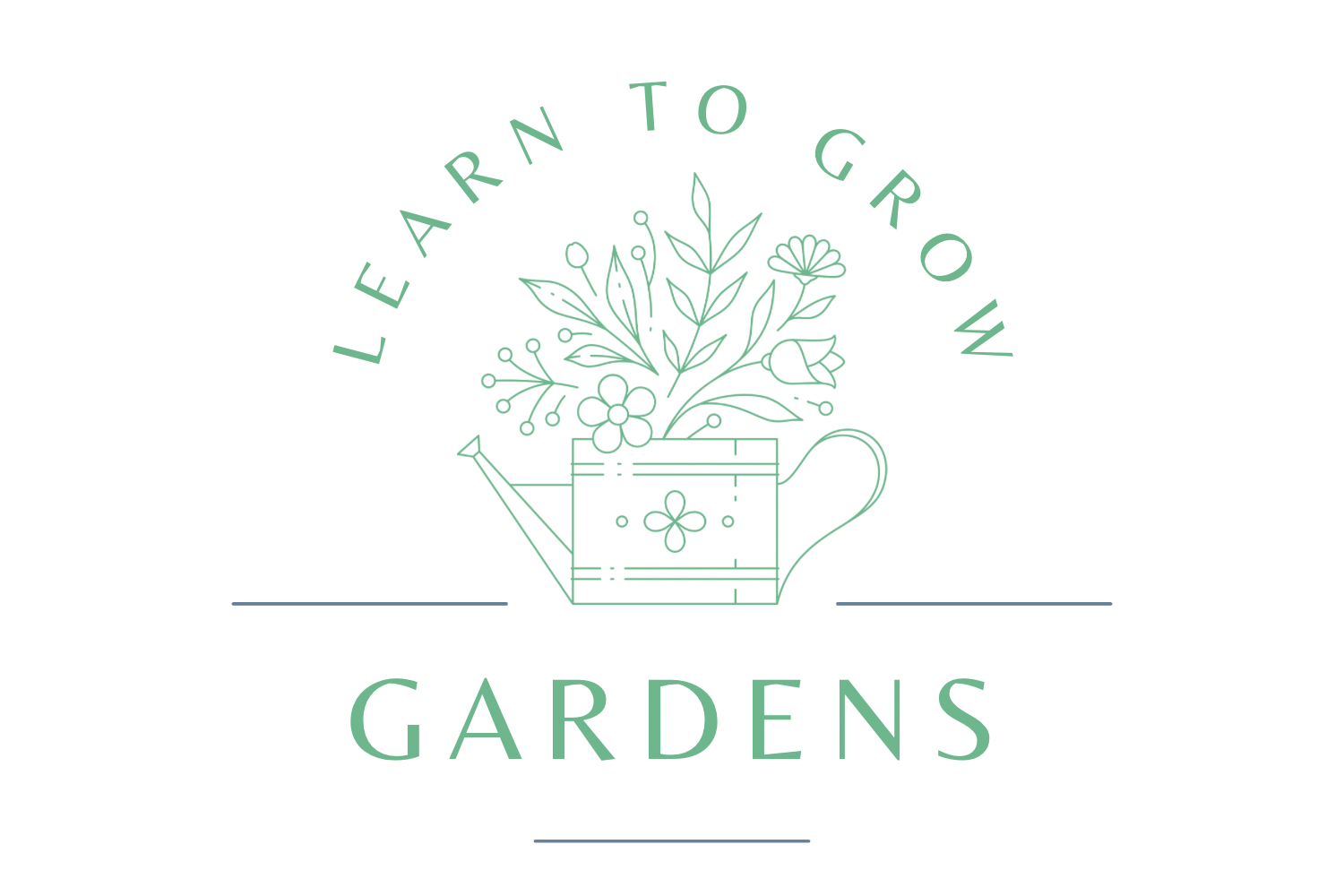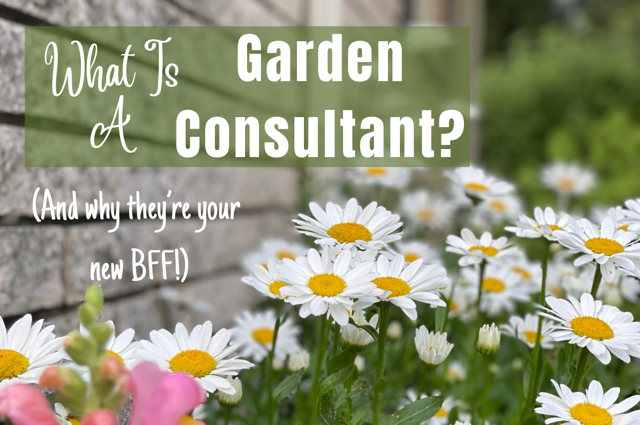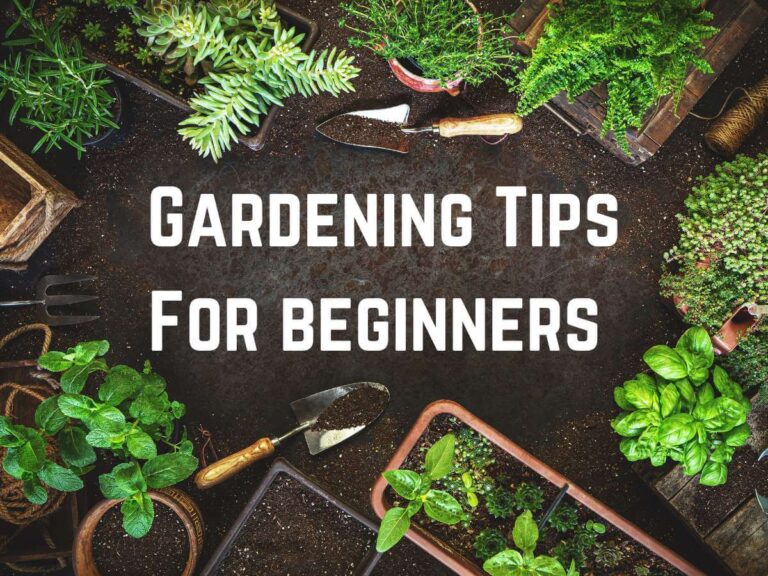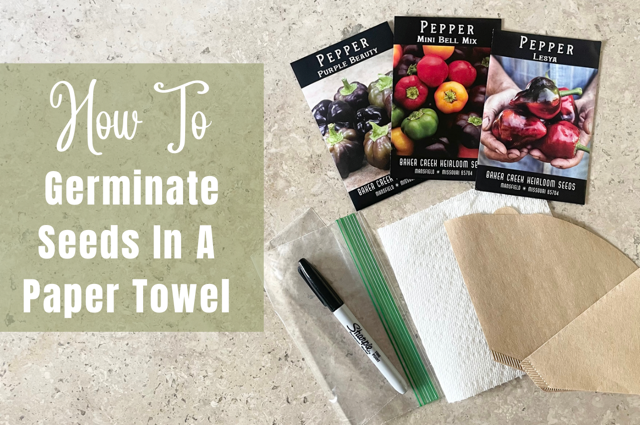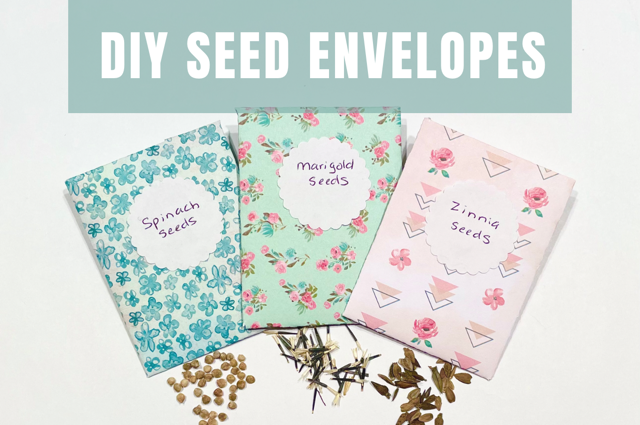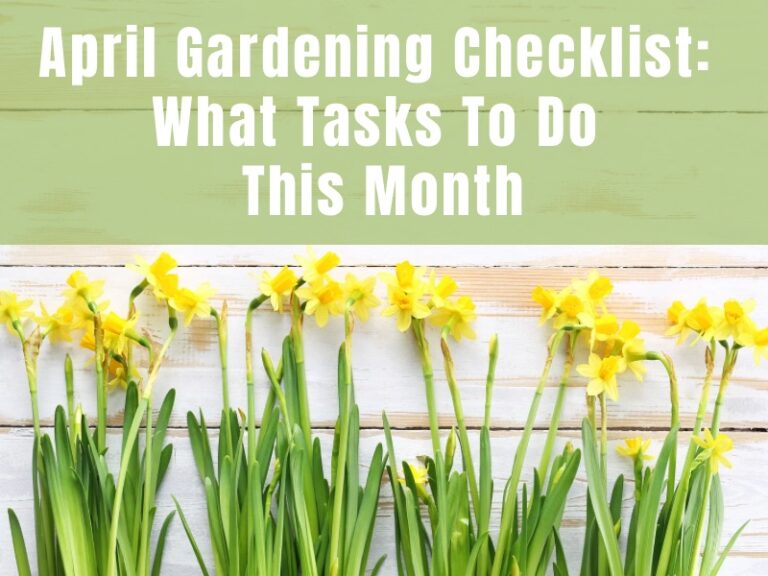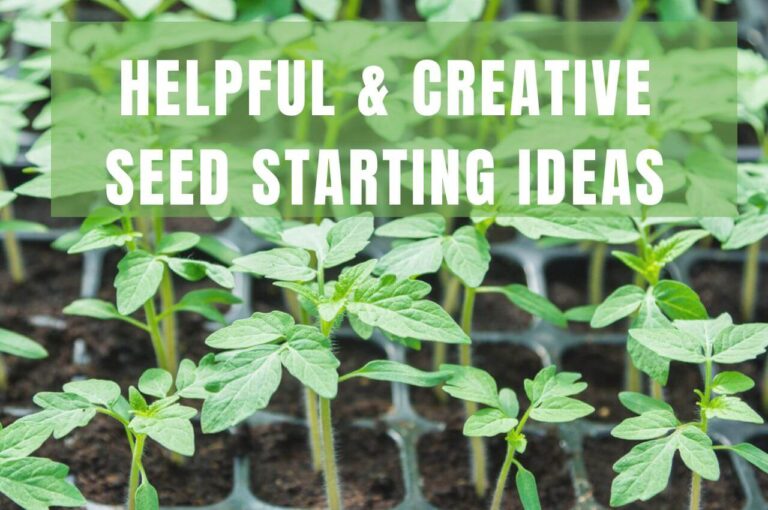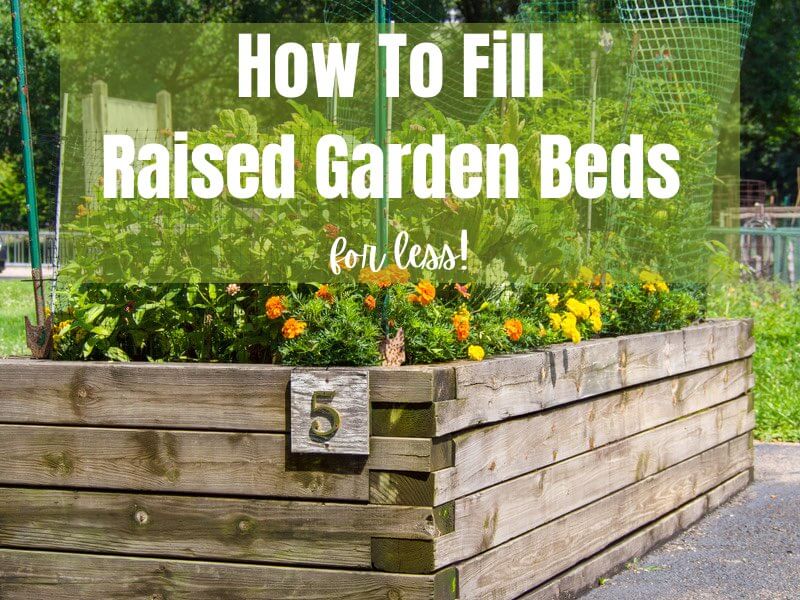
How To Fill Raised Garden Beds Cheap
Raised garden beds are popping up in backyards everywhere, and it’s not hard to figure out why. They’re easier on the back, contain fewer weeds, and the soil is nutrient rich, drains well, and has the right texture for delicate plant roots to speed out and grow.
As much as raised beds are gaining in popularity, the initial cost can cause some gardeners to think twice before installing them in their backyards. However, raised beds have many benefits, which I go into further in this post, and are well worth the initial investment.
Fortunately, there are ways to reduce the cost of installing a new raised bed in a flower or vegetable garden. In this post, I’m going to share with you 50 ways to fill your raised garden beds cheaply.
How to fill raised beds
The best way to fill raised beds inexpensively is to fill the bottom of your bed with compostable materials, such as leaves, grass clippings, or cardboard, leaving 6-8 inches at the top for planting in good quality soil. The compostable materials on the bottom will break down over time, and eventually turn into healthy soil, as well.
This is similar to the hugelkultur method, which has been around for centuries. It involves layering large rotting logs and plant debris in the bottom of a bed, and topping it with compost and soil.
When I filled my raised beds, I set the frames in place with a layer of cardboard on the bottom of the raised bed. I used grass clippings and leaves to fill mine, and every time my son mowed our lawn, I had him bag it and dump it into my beds. When they were filled just enough to leave 8 inches on top, I added soil.
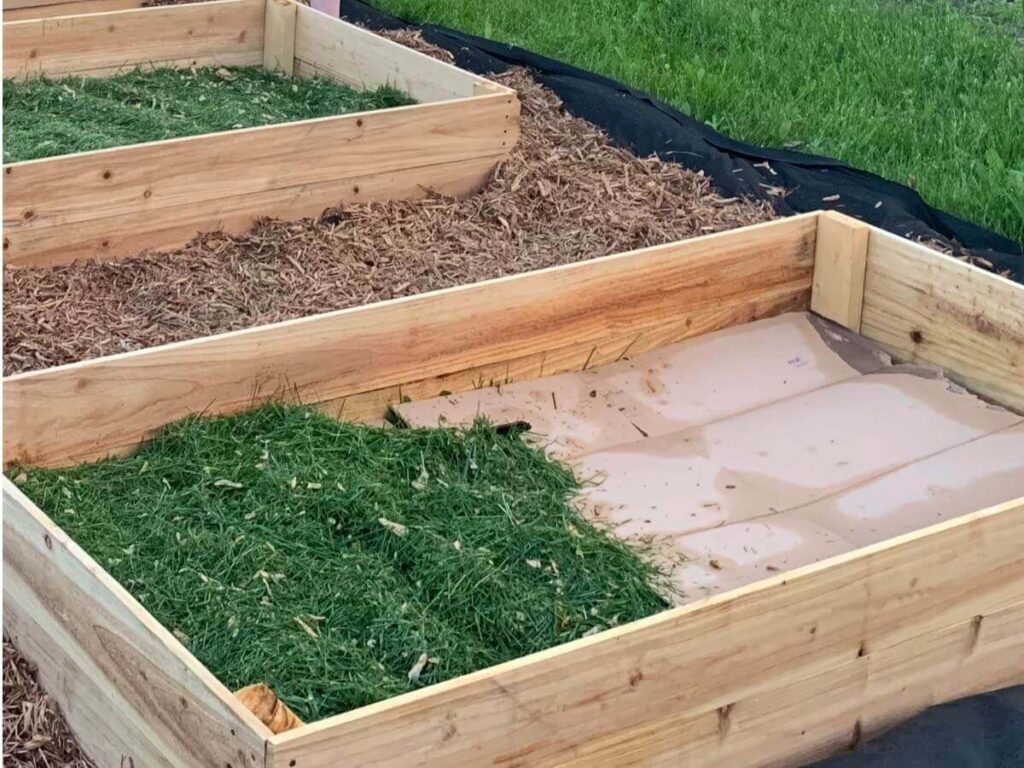
The first season with your beds, it’s best to stick with shallow-rooted plants. The bottom layer will be hard on plant roots, not being fully broken down. As the materials break down over time, you can add plants with deeper root systems. It’s best to avoid root crops, such as carrots or sweet potatoes for 3 full seasons. (While you wait, root vegetables can easily be grown in a fabric bag, like this method for growing potatoes)
A note on the importance of good soil in a raised bed garden
When trying to cut costs, it can be tempting to go with the cheapest option. It can also be tempting to grab those premixed bags of raised bed soil when they go on sale at the garden center.
Do not do this.
If you’re going through the trouble of installing raised beds at all, you want those beds to be full of quality soil. The health of your soil has a huge impact on the health and vigor of your plants.
With that in mind, you want to use materials that will provide your plants with healthy soil. Some inexpensive options, and even prebagged garden soil mixes, can cause years of unnecessary stress as you struggle to grow healthy plants.
Additionally, some of the items on this list take longer to break down than other options. For this reason, when filling a raised garden bed with “filler” (cheaper) materials, you want the top half of the bed to be filled with plantable soil. The exception to this would be if you have the time to let your raised beds sit while the filler materials have time to decompose, which can take a year or more.
For the soil in the top half, my raised bed soil mix recipe explains the perfect DIY blend.
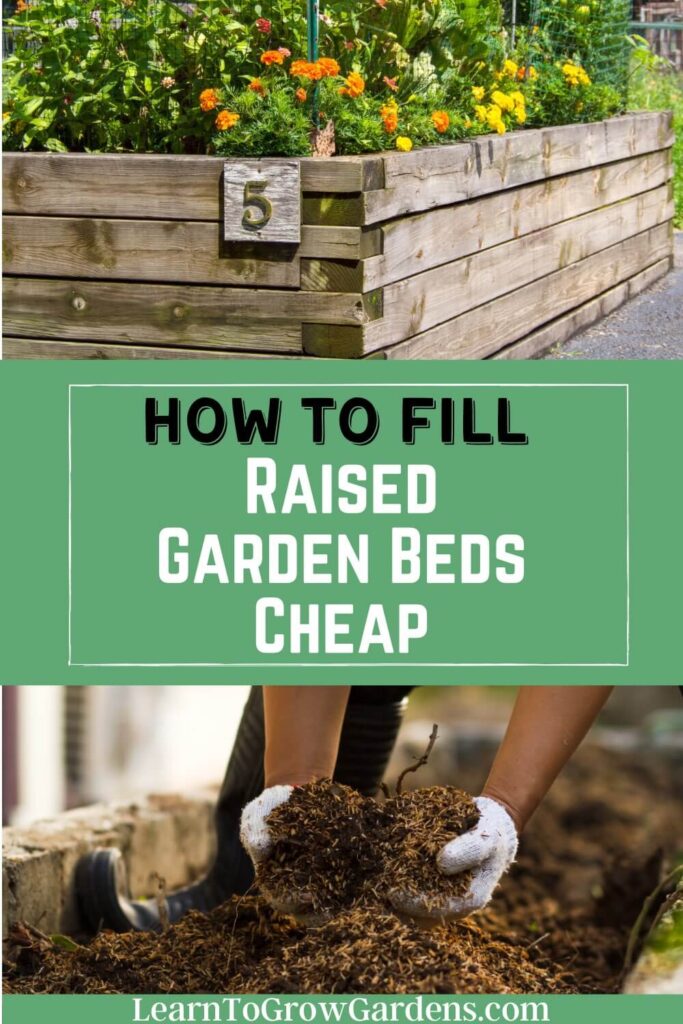
What to put on bottom of raised garden bed
When filling raised beds, you need to choose items that are compostable and will break down easily. Additionally, adding a layer of compost in with your filler materials will introduce more healthy microorganisms. It will also encourage earthworms to work their way through your raised beds, breaking down your organic materials as they go, and turning it into nutrient-rich soil.
The following list contains 50 different ideas for filling raised beds cheaply. A mixture of different materials is best, and a mixture of “browns” and “greens” is even better. Browns are full of carbon, and includes things like leaves or straw. Greens are items that contain nitrogen, and include food scraps and plant trimmings.
You can find out more about brown and greens in compost here, along with learning to make your own homemade compost. Homemade compost is the cheapest way to always have compost on hand. Regularly applying compost is a great way to feed your garden and improve your soil. Even the smallest compost bin can make a difference!
But let’s get back to the list of what to put on bottom of raised garden beds…
How to fill raised garden beds cheap
Before adding your items to your beds, it helps to chop them up as small as you can. The smaller the pieces, the faster they break down.
The following items are all options for filling your raised beds on a budget.
- Logs and branches. Large logs and branches layered on the bottom of a bed will help to fill up space, and will break down over time. However, the smaller the pieces are when adding them, the quicker they will beak down.
- Yard waste, such as cleaning up beds in the spring. When cleaning up your yard, save your yard waste for layering in the bottom of your beds. Leftovers from cutting down perennials, leaves and things from raking out garden beds, and even sticks from around your yard all make a good bottom layer to your raised beds.
- Grass clippings. Grass clippings are great option your filling your beds. As I mentioned earlier, when we put in our beds, I had my son dump the lawn clippings into the beds every time he mowed. We left them to dry out in the sun, and each week he added more. When they reached about 1/3 of the way up the side of the beds, we added our raised bed soil. <link>
- Old leaves. If you’re filling new raised garden beds in the fall, old leaves can be an abundant option for filling the bottom of the beds. Take them into a wheelbarrow and dump them in. If you’re able to, mulching them with a lawnmower first will help them break down quicker. As an added bonus, old leaves and leaf mold are excellent garden amendments and will help create nutrient rich soil as they break down.
- Kitchen scraps. Save those potato peels and discarded onion and carrot pieces! Vegetable scraps and great for compost, and for filling your beds. They won’t fill up an entire bed, but every little bit helps. Plus, they’ll add nutrients back into the soil as the decompose, and encourage worm activity. Worms are always great for the garden!
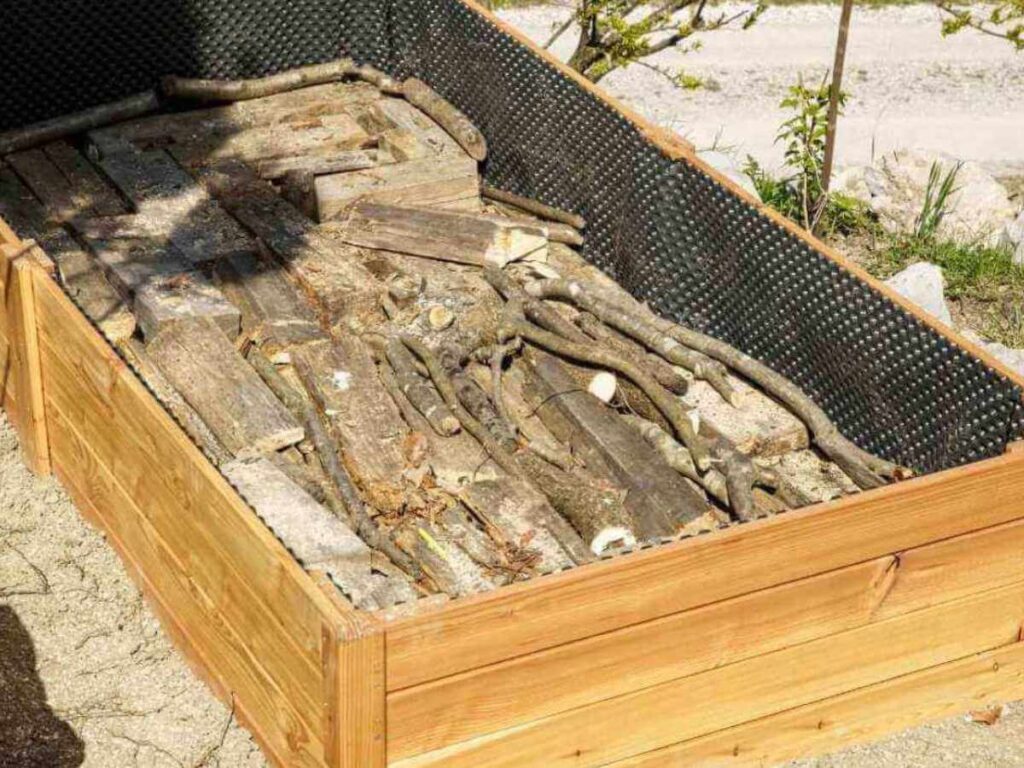
6. Wood chips. If you have leftover wood chip mulch from mulching your beds, a little bit can be used to fill the bottom of the beds. Wood chips can take awhile to decompose, so it’s best to combine them with other materials.
7. Leftover potting soil. Every spring, I replace the potting soil in my decorative planters with fresh potting soil. The spent soil can be moved to new raised beds, where it will combined with other materials and become nutrient-rich again over time. Leftover bags of soil from other garden projects are great, as well.
8. Newspapers. Newspaper breaks down fairly quickly and can be an easy way to add bulk to the bottom of your beds. Just be sure to avoid shiny or glossy ads, and stick with the black and white papers. These are compostable and typically made with soy-based inks, which makes them safe for use in your garden.
9. Straw bales. Straw is another compostable item that can break down pretty quickly. If you have leftover straw from fall decorations, or from mulching strawberry beds, add it to the bottom of your beds!
10. Pine needles. Pine needles can be acidic, so it’s best to use these in smaller amounts. Adding them in with old leaves and newspaper, for example, will make a good mix that will quickly break down into soil.
11. Sawdust. If you have some woodworking projects on your agenda using kiln-dried wood (not pressure treated, as it’s unsafe for the garden) save that sawdust for filling the bottom of your beds.
12. Paper towels. Old paper towels that were used for meals and are free from chemicals can be tossed right into your garden beds.
13. Napkins. Same deal as paper towels, any napkins that are free of chemicals can safely be tossed into your beds.
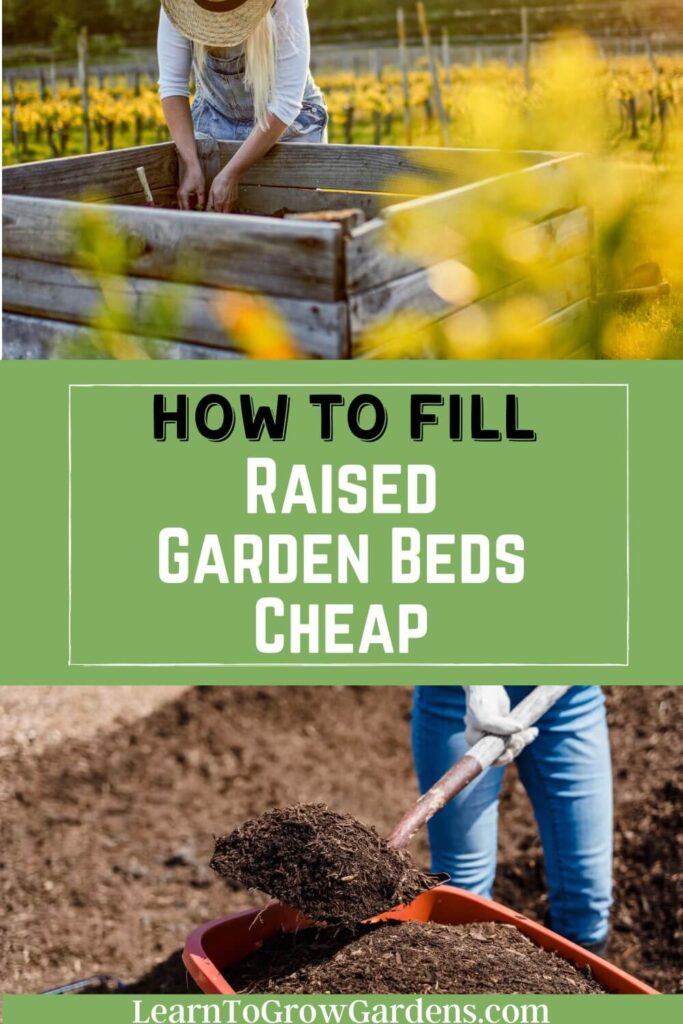
14. Paper. Recyclable paper that isn’t glossy or shiny can be added to your raised beds. Avoid paper with colored inks.
15. Dead flowers from deadheading. Again, another item that won’t fill up a bunch of space, but every little bit helps!
16. Clippings from pruning perennials. Are you seeing a theme here with yard waste stuff? If you’d toss it in a yard waste bag, it would probably make a great filler for your beds!
17. Leftover pumpkins. Break them down into smaller pieces, to help them break down quicker.
18. Old flower arrangements. After your arrangements have lived their best life, spread them out and around your beds to break down into soil.
19. Dead houseplants. I know, we don’t want our houseplants to die, but sometimes it happens. Let them live on as nutrients for your raised bed plants!
20. Pet or animal fur. If you have an animal with an excessive amount of hair, toss the extras into your beds. Animal hair is 100% compostable and will break down into soil.
21. Coffee grounds. Coffee grounds, and the paper liners, can be tossed right into your beds after brewing.
22. Old Christmas trees. This one might depend on where you live, as you’re probably not filling raised beds right after Christmas in the far north. But if you live in a warmer climate, or have a place to store your tree until spring, it can be great for filling up raised beds! The smaller you chop it up, the quicker it will break down.
23. Egg shells. Egg shells can add calcium to the soil after they’ve broken down.
24. Egg cartons. Paper egg cartons are great for compost, and for filling raised beds.

25. Cardboard boxes. If you’re an Amazon Prine member, you’ve probably got a lot of Amazon packages coming to your home. The good news is that even the tape on Amazon boxes will break down. Break the boxes into smaller pieces, and layer them on the bottom. I especially like my boxes for covering the grass on the very bottom of the beds.
26. Unwaxed pizza boxes. Same as Amazon boxes, break them down and layer on the bottom of your beds.
27. Paper bags. Paper shopping bags or paper gift bags can be crumpled up and used to fill your beds. Avoid shiny papers.
28. Toilet paper and paper towel tubes. Are you noticing a theme with paper products? If it can be recycled, it can fill the bottom of your beds!
29. Wine corks. Wine corks are small, and you’d have to drink A LOT of wine for them to take up a lot if space, but every little bit helps!
30. Bamboo skewers and poles. Leftover bamboo poles from gardening can be tossed right into your beds. If you have a lot of them, it’s best to break them down into smaller pieces first.
31. Old loofahs. Natural loofahs, not synthetic.
32. Cotton balls. Avoid cotton balls that have been soaked in chemicals.
33. Cotton swabs. Cotton swabs with cotton sticks only. Avoid swabs with plastic sticks.
34. Old cotton clothing, torn into shreds. Great repurposing idea for clothing with stains or tears, that can’t be donated.
35. Old cotton towels and washcloths. Tear them into smaller shreds, to help them break down quicker.
36. Junk mail. Finally, a use for junk mail! Stick to mail that’s free of glossy and shiny paper or plastic address window inserts.
37. Old rope and twine. Stick to natural materials only, such as cotton or hemp. If the rope is thick, break it down into smaller threads before layering in your beds.
38. Old rugs made from natural fibers. Old cotton or wool rugs, torn into shreds and small pieces, are great for layer in the bottom of beds. Only use rugs dyed with natural, non-synthetic dyes.
39. Ashes from natural wood fires. In small amounts only, as too much can causes issues with your soil pH.
40. Natural holiday wreaths. Wreaths made from fresh greenery and pinecones can be saved for adding to your raised beds bottom layer.
41. Evergreen Christmas garland. Fresh greenery only, not synthetic. It can be layered as is, right in the bottom of your raised garden bed.
42. Old wrapping paper. Non-glossy paper can be thrown in your beds, as well. After a big holiday gathering, you could have quite the collection for layering in your beds!
43. Small animal bedding. Small animal bedding made from cotton or wood is great for layering in your beds! Especially used animal bedding from a rabbit, as rabbit poo makes great compost!
44. Brown craft paper. Brown craft paper is recyclable and compostable, making it another great idea for an inexpensive way to fill raised beds.
45. Feathers. If you have chicken or other feathered friends, toss those extra feathers into your beds!
46. Horse or cow manure. In moderation, as animal manures take a bit to break down and decompose. If adding these to your beds, it’s best to stick to shallow rooted plants. Animal manures can be too hot for plant roots as they decompose.
47. Old dog food. Expired dog food? Turn it into a cheap layer in your raised beds!
48. Stale cereal. Same concept as old dog food, stale cereal can be thrown in the compost or in your raised beds.
49. Expired pastas. Pretty much any stale starchy food can be tossed in your beds to decompose!
50. Alfalfa hay used for pets. If you have leftover hay (or stale hay, if you have a picky pet rabbit like ours. IYKYK) toss it in your beds to fill up a little bit more space.
There you have it!
50 ideas to fill raised garden beds cheaply!
Again, not every item in this list will fill the entire bottom layer. Keep a bin in your house or garage, and toss items from this list into it as you find them. You’d be surprised how it can add up over time!
When you’re done filling that bottom layer with the cheapest way to fill raised garden bed, be sure to check out these other raised bed posts:

Hi, I’m Liz! I’m a Master Gardener, Garden Coach, and Professional gardener. I’m also a mom of 4 who likes to putz around in my garden, growing food and flowers. You can read more about me here.
I started Learn To Grow Gardens as a resource for anyone looking to find more success in the garden. You can find gardening help, inspiration, and community through my Facebook Group, Instagram page, and by joining my email list below.
